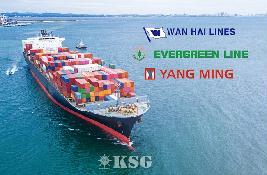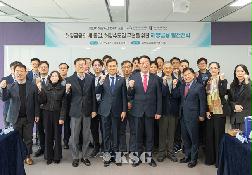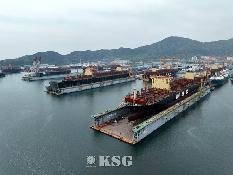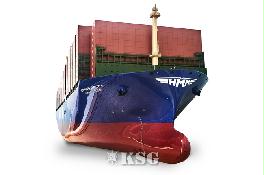2022-08-30 09:02
Port of Hamburg Boosts Container Throughput Market Share

The container throughput trend in the Port of Hamburg in the first half of 2022 was more positive than expected. Total throughput of 4.4 million TEU – 20-ft standard containers – in the first six months of the year represented slight growth of 0.9 percent. Compared to the major competing ports of Antwerp-Bruges, Rotterdam and Bremen/Bremerhaven in Northern Europe, all reporting downturns in container handling, Hamburg was the only major port in the range to report an increase. At the four major ports in the European North Range, for the first six months average container throughput fell by 4.6 percent. Against this trend Hamburg, gained 1.1 percentage points, being the only top port to achieve growth in container handling.
At 61.8 million tons, throughput in Germany’s largest universal port was 2.7 percent lower than in the comparable period of the previous year. The drop in the total throughput can be explained by the weaker figure for bulk cargo handling. At 17.6 million tons, handling in Hamburg was down by 8.9 percent. Totals for each of the three segments were lower. At 3.0 million tons, suction cargoes were down by 7.2 percent, at 10.2 million tons, grab cargoes by 3.2 percent, and at 4.5 million tons, liquid cargoes by 20.5 percent. The overall total was partly the result of stiffer EU sanctions against Russia, along with changes dictated by the market in the trading and transport of raw materials.
“The first half of 2022 confronted companies in the Port of Hamburg, their workers, also all our logistics partners and port customers, with very special challenges. The war in Ukraine, for instance, led to far-reaching sanctions in foreign trade that affected and will further affect seaborne cargo throughput in the Port of Hamburg. Together with the almost complete cessation of container transport with Russian ports, another consequence of the Russian attack on Ukraine – apart from downturns in general cargo handling – was also a steep reduction in bulk cargo handling,” said Axel Mattern, CEO of Port Hamburg Marketing.
Mattern pointed out that not only war in Ukraine, but also the repercussions of the global corona pandemic, will continue to cause transport and supply bottlenecks for trade and industry. On many routes, this is leading to longer transit times and steeply increased freight rates. In Mattern’s view, the main causes of supply chains thrown off schedule, as well as delays and disruption in worldwide transport processes, should not be attributed to ports alone. Instead, it is at the interface between land and sea transport that such factors as shipping bottlenecks and delays in truck and rail traffic are most strikingly visible and notable for port customers and the public. “The weeklong lockdown in the Port of Shanghai, and ship arrivals thrown off schedule, resulted in extraordinary peak loads at the port’s handling terminals. Containers not collected punctually, and blocking urgently needed handling space, involved additional effort plus problems for the efficient organization of handling and pre- and on-carriage transport between seaports and hinterland destinations,” added Mattern.
< Korea Shipping Gazette >
많이 본 기사
- HMM, 4번째 9000TEU급 신조 컨선 부산-남미동안항로 취항“미중 입항세 유예로 국적선사 경쟁력 제고 놓쳐”신선대감만터미널·부산신항만·경북항운노조 항만안전대상 영예‘남미 30%대 껑충’ 컨운임지수 2주만에 1400선 회복벌크선시장, 철광석 수요 활황에 선복 부족 이어져팬스타그룹 2500t급 연안유람선 부산서 첫 뱃고동부산항만공사, 스마트항만 기술혁신포럼 개최中 시안-체코 프라하 정기화물열차 운행 개시대만 3대 선사 3분기에 영업익 1.7조 합작KMI, 부산국제금융진흥원과 해양수도 금융전략 논의
- 부산신항 비엔씨티, 김장김치 1100박스·700만원 기탁HD현대, 디지털·AI 앞세워 2030년 ‘매출 100兆’ 목표 제시박정석 한국해운협회장, 명예 해기사·1급항해사 위촉인천공항공사–항공대, 공항직원 전문교육 확대 나선다BPA, 환적모니터링시스템 포트아이 16일 先배포조선기자재연구원, 산업혁신기술지원플랫폼 사업성과·과제 공유건강칼럼/ COPD 환자, 추우면 ‘숨’이 힘겹다!해양수산연수원 오션폴리텍 교육생 헌혈증 120장 기부중국유럽정기화물열차 누적 운행횟수 12만회 돌파IPA, 인항고·인천해사고에 장학금 2000만원 전달


































































0/250
확인